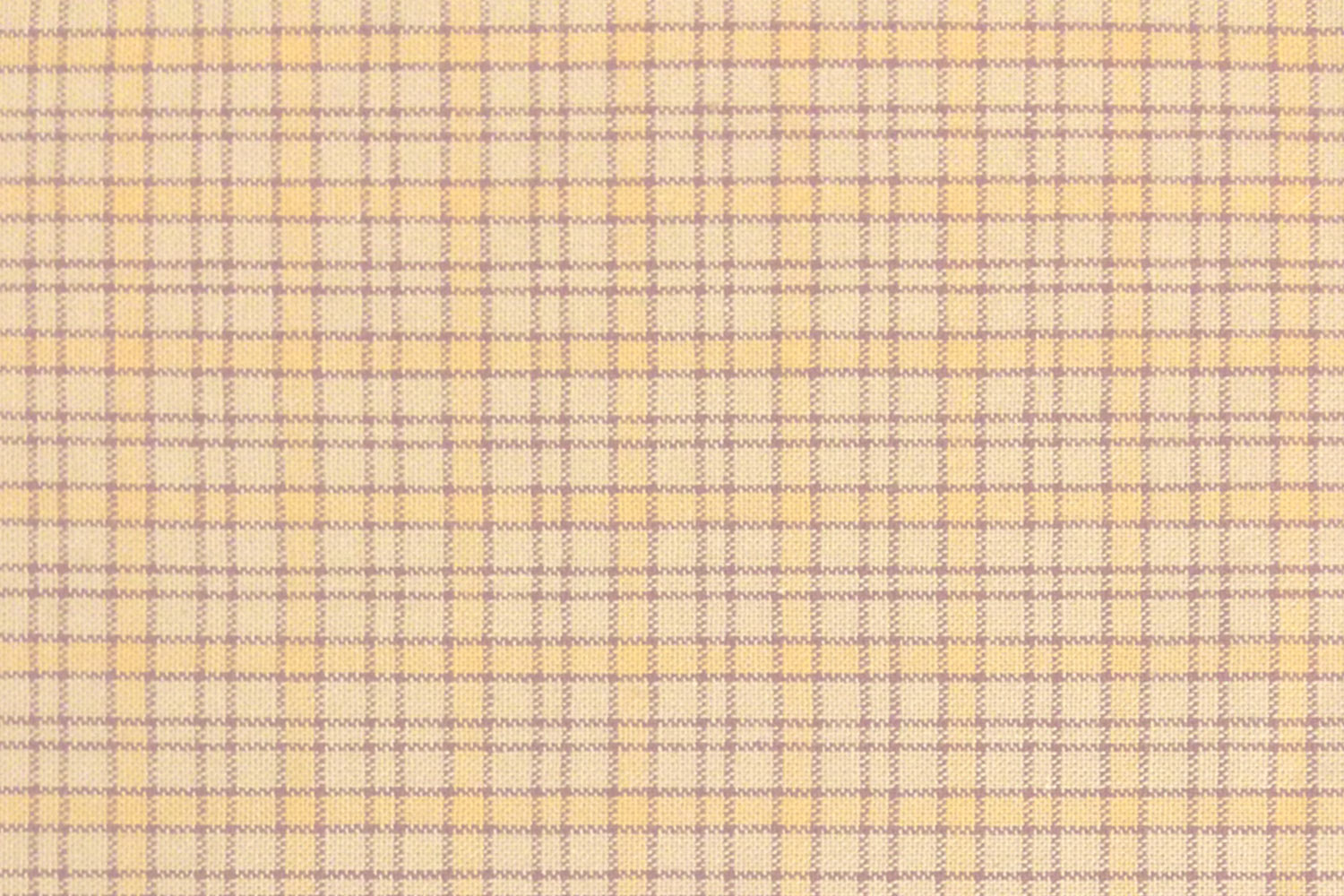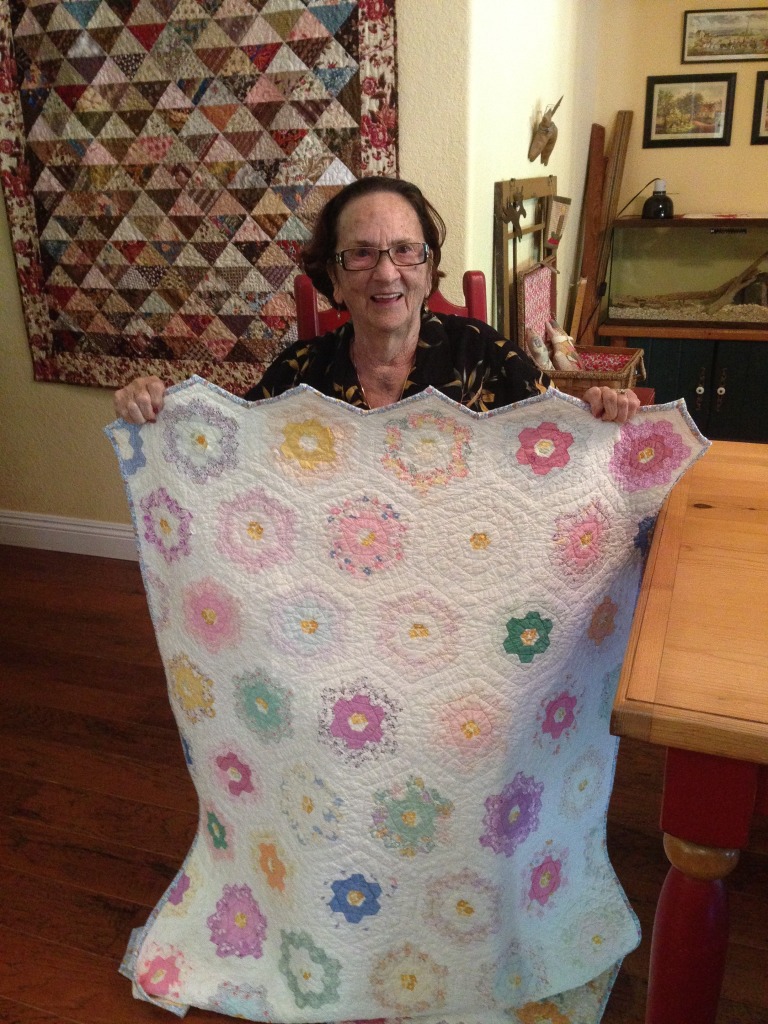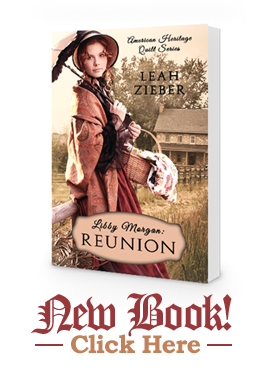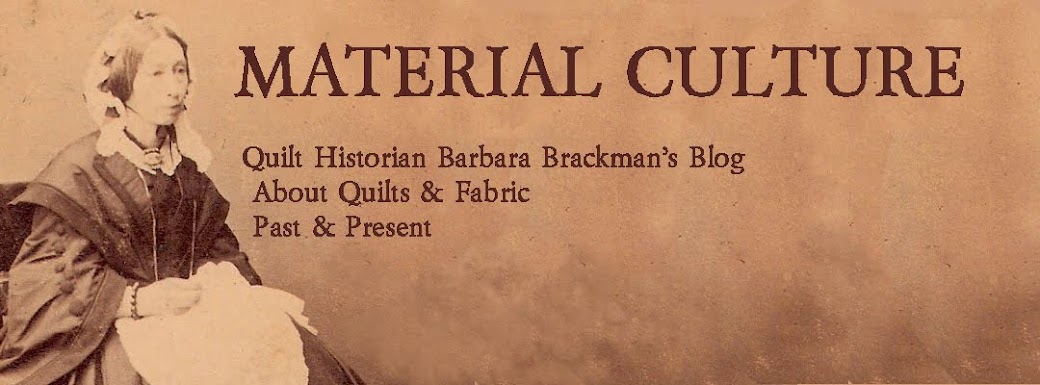I Honored Her Request!
I recently had the privilege of helping a wonderful lady salvage her mother’s vintage quilt. Meet Althea Yancey Spragg! She showed up for a visit with a tattered (particularly on one end) c1930s Grandmother’s Flower Garden quilt which had been hand made by her mother. Althea was concern about what would happen to the quilt when it was passed on to her descendants, particularly since it was pretty well worn out on one end. We talked about a variety of options and decided the best course of action was to come up with several items that she could pass along to her children and grandchildren.
WHAT? You Cut Up An Antique Quilt?
Yes I did! And it wasn’t easy for me. I have a standing rule, Do Not Cut Up Antique or Vintage Quilts. . . no matter how tattered! And rarely will you find me standing over an old piece with scissors in my hand. In fact, I am currently reassembling a c1850s quilt that someone else cut apart (more on that later). But in this very special case, Althea wanted to pass along the quilt and feel assured that the relative on the receiving end didn’t think it was so tattered it was just garbage. We all know what happens to those quilts… “Meow!”
After close examination, I determined I could get two lap (or baby) quilts out of the one end that was not so worn out. It worked perfectly to cut the quilt in half down the center lengthwise to yield two pieces. The original quilt top and bottom ends finished with a zig-zag following the layout of the hexagon; I decided to maintain the integrity of the original quilt and do the same for the two crib sized quilts. I found a reproduction c1930s print in both blue and pink (same print different in two color ways) to use for the binding. The fabric matched nicely. Despite having one or two tattered blocks, the crib quilts looked grand – they could not possibly be mistaken for patchwork animal fodder. (Yes, if you look closely in the background of the picture you will see a few of those cats! But truthfully, I only purchase them for the fabric study. And that is a whole other can of worms I just opened!)
With the left over parts of the tattered part of the quilt, I was able to make some framable pieces as well. I took one flower unit that was in great condition, cut it out in the shape of the hexagon leaving a little white around the flower, bound it in the pink repro fabric and stitched it onto a c1930s green check reproduction. Then I framed the piece in a shabby-chic, small white frame. It is small enough to fit on a table stand or hang on a wall someplace. I made it especially for Althea so she would have something to keep at her home after she gave the quilts to her grandkid. (I wish I had taken a picture so that you could see the results – sorry – next time!).
Each quilt was provided with a label that would identify the piece for future generations. The label read:
“Quilt Maker Susan E. Gary Yancey of Lincoln, Kansas hand made this quilt in the 1930s. In 2014, daughter Althea Yancey Spragg of Hemet, California commissioned the restructuring of this well-loved quilt in order to pass it on to the Yancey descendants.”
As an added treat, I did a little genealogy on both her parents and both sets of grand parents – printed up the information and was able to provide her with some background on her family she did not know.
In all, the experience was quite satisfying for Althea and for me. I help her pass on a family treasure that would likely have been tossed out or sold for pennies to make kitties. She left feeling confidant that her mother’s work would be treasured by future generations. I feel blessed to have helped to honor her request and her beautiful smile was my reward.
Join me next time as I show you the c1850s pieces I’m reassembling….
Until then…
Shine a light in the darkness!
Leah





